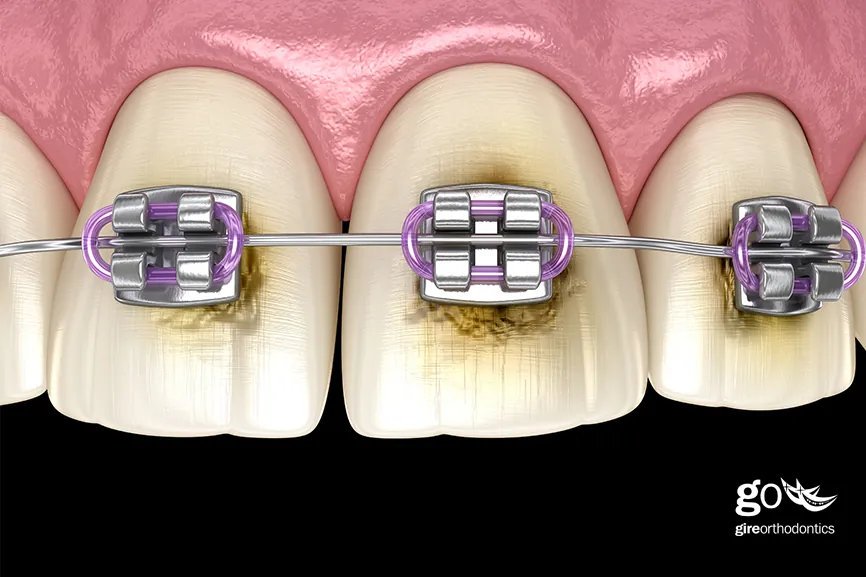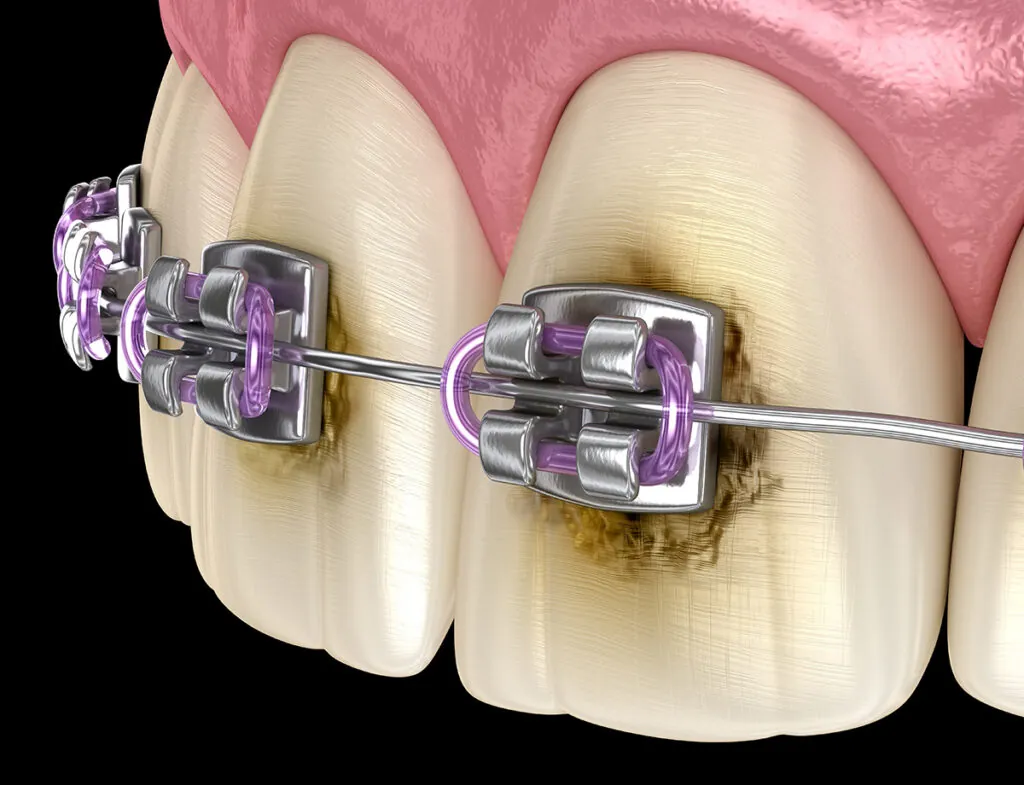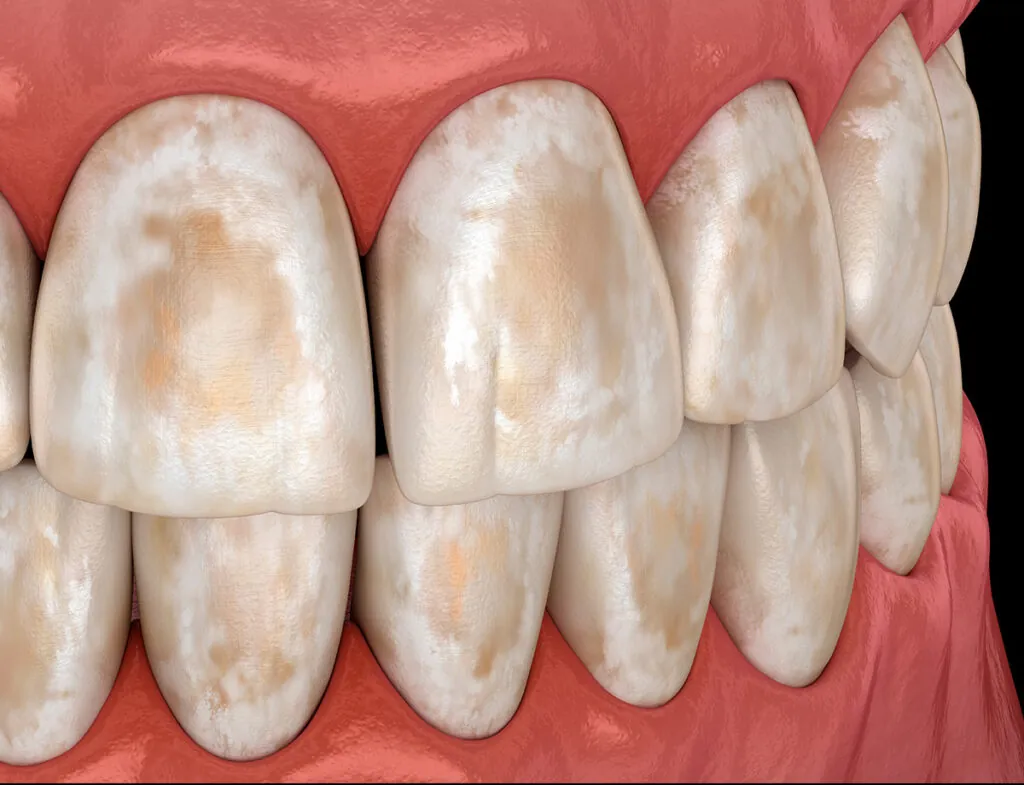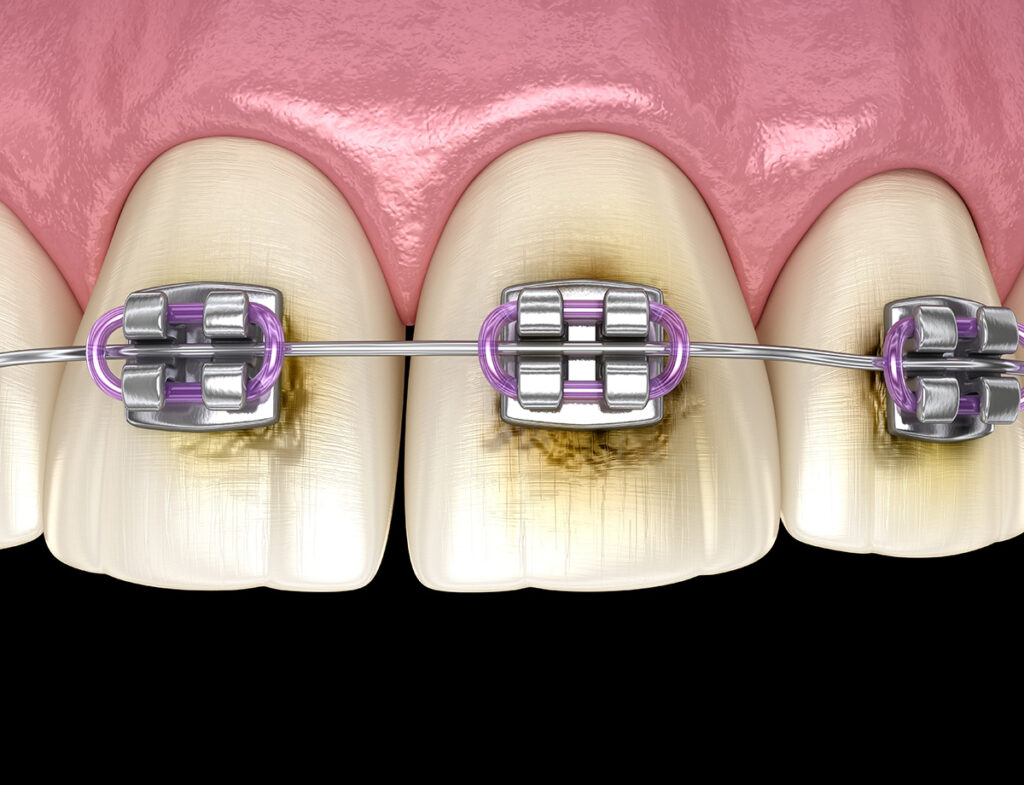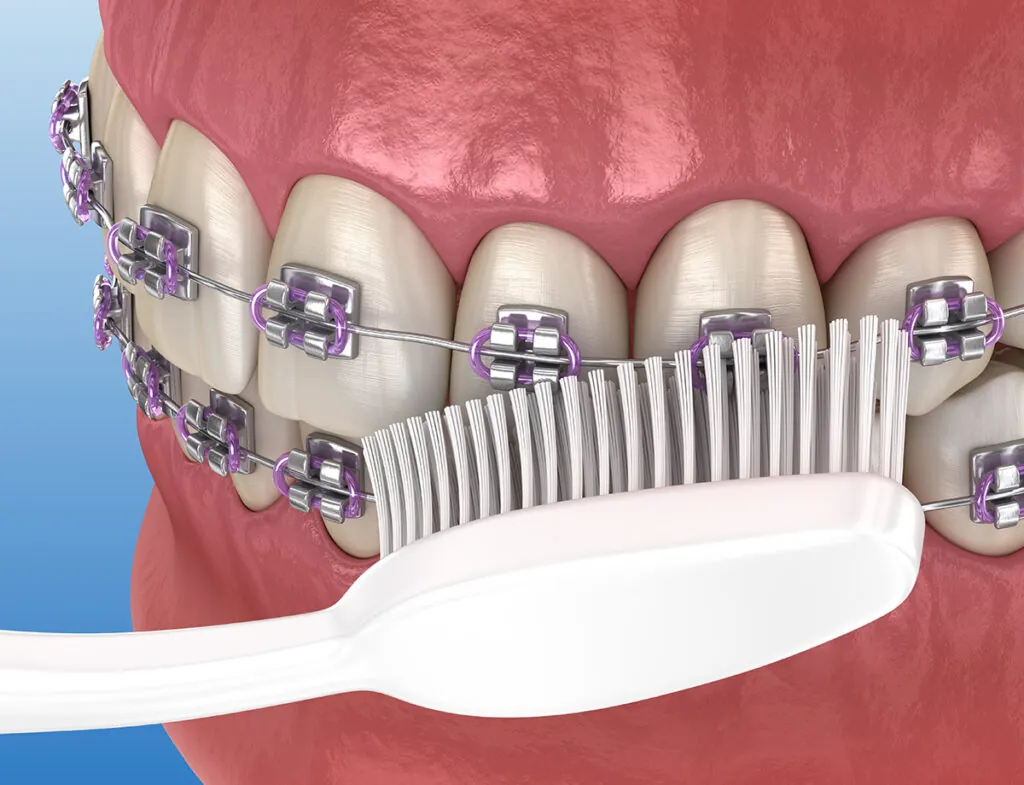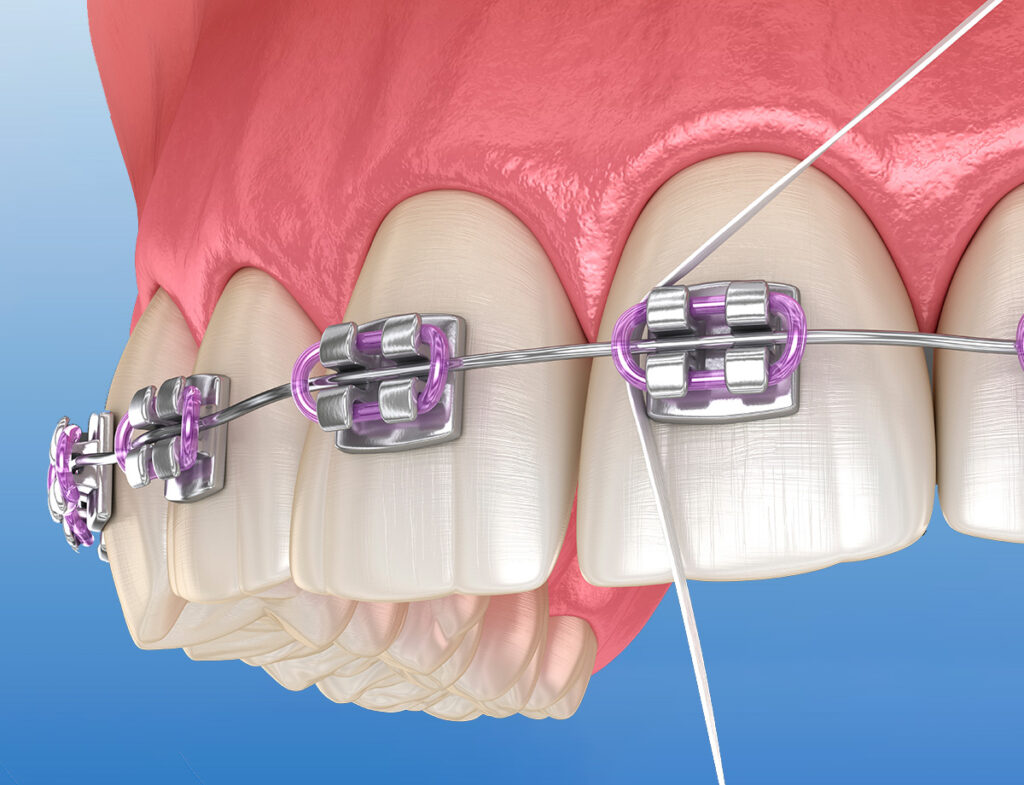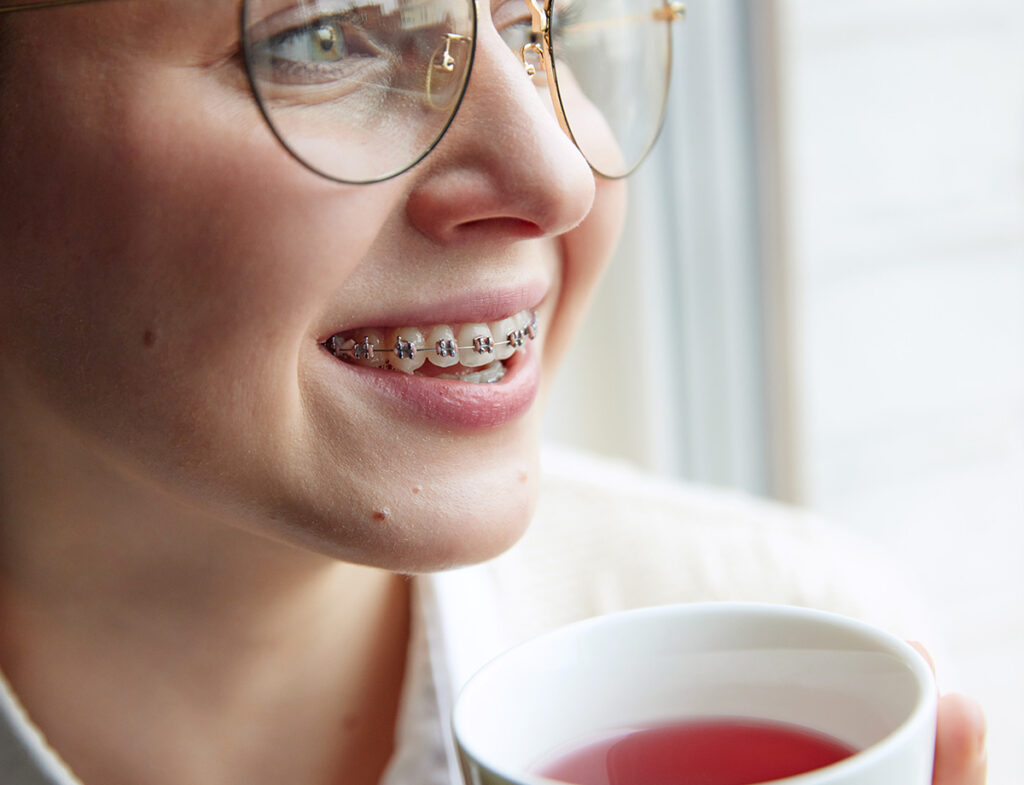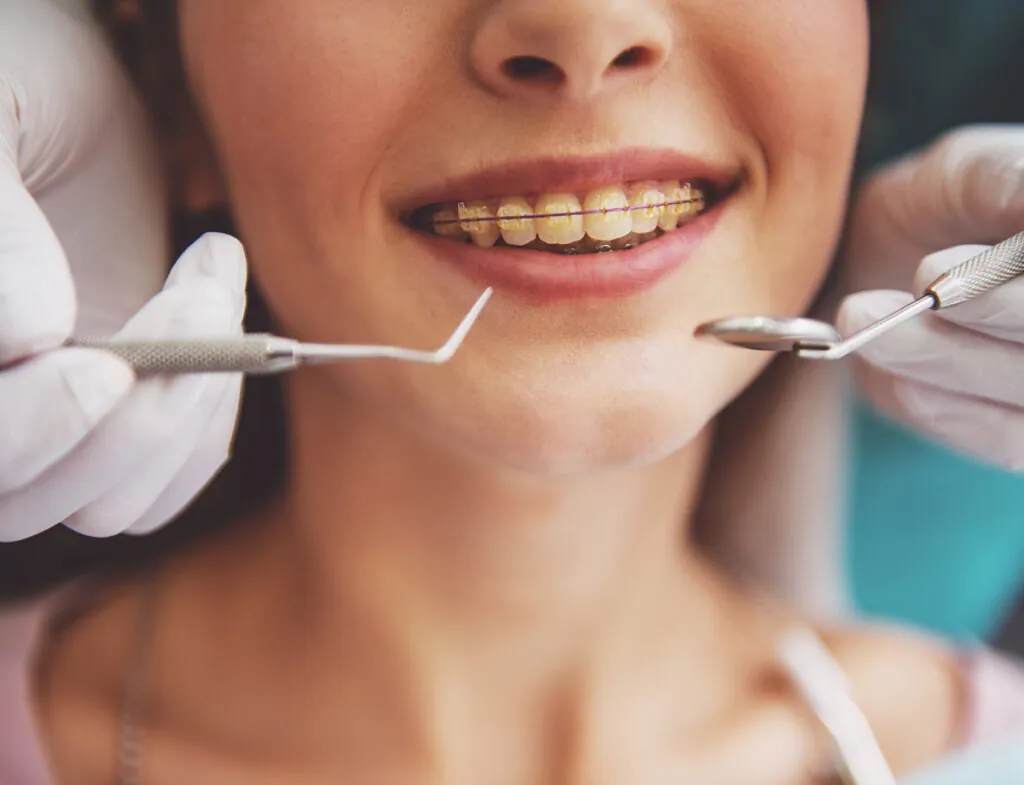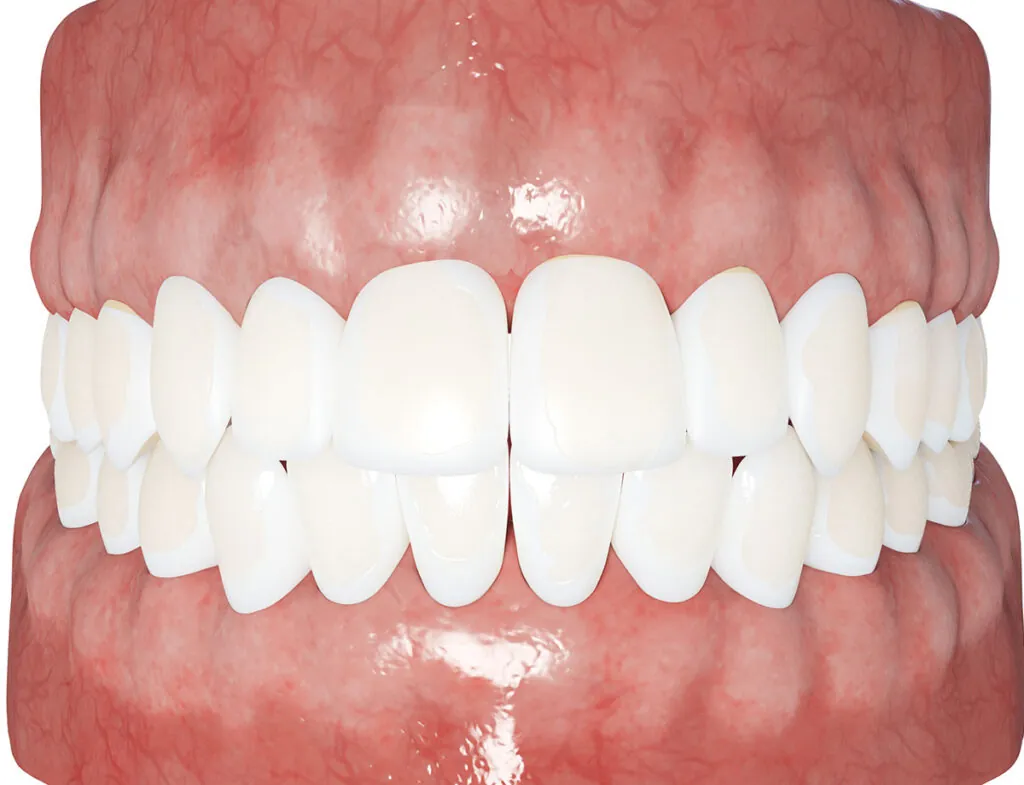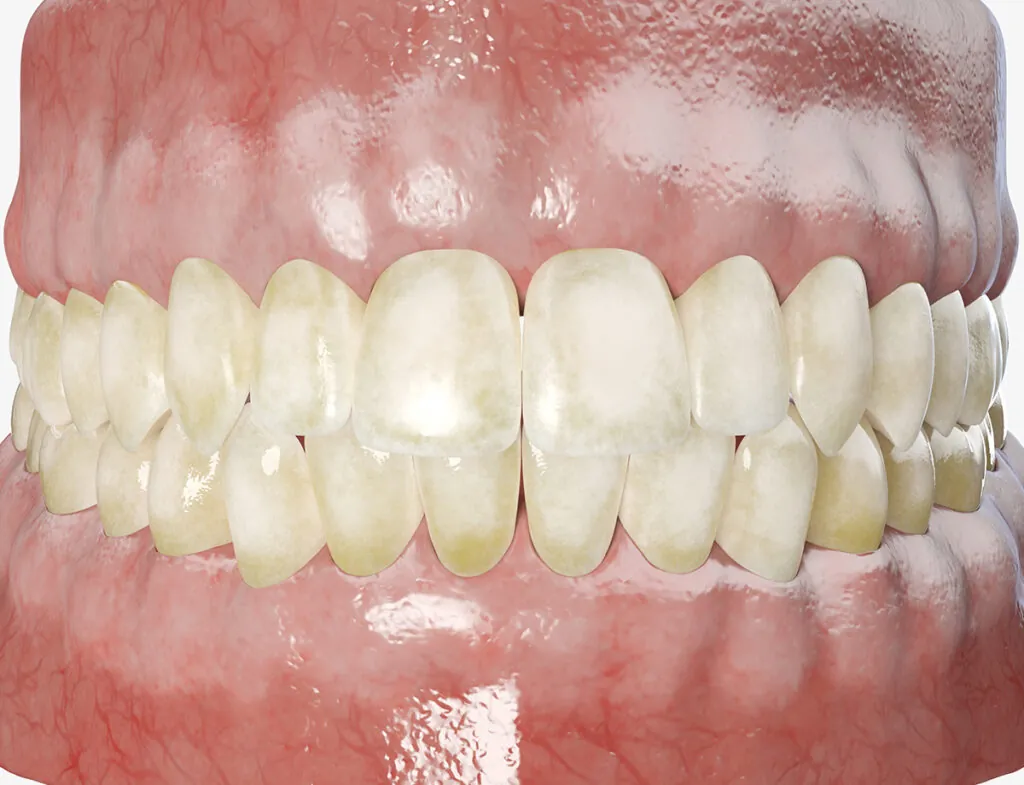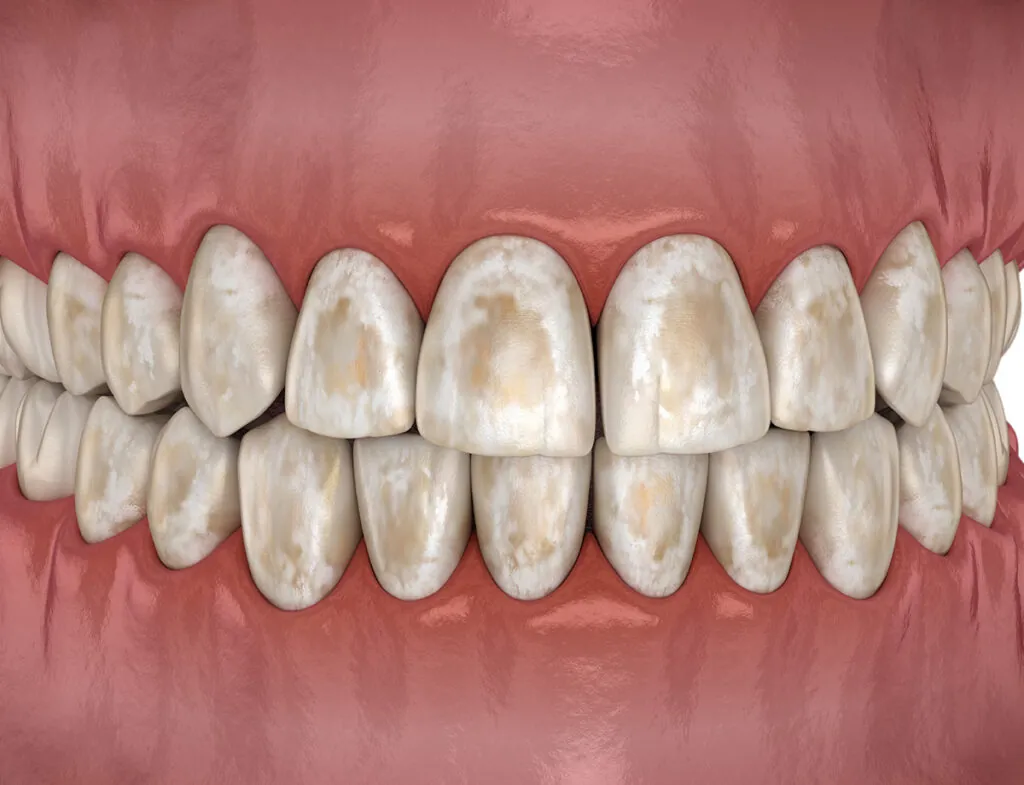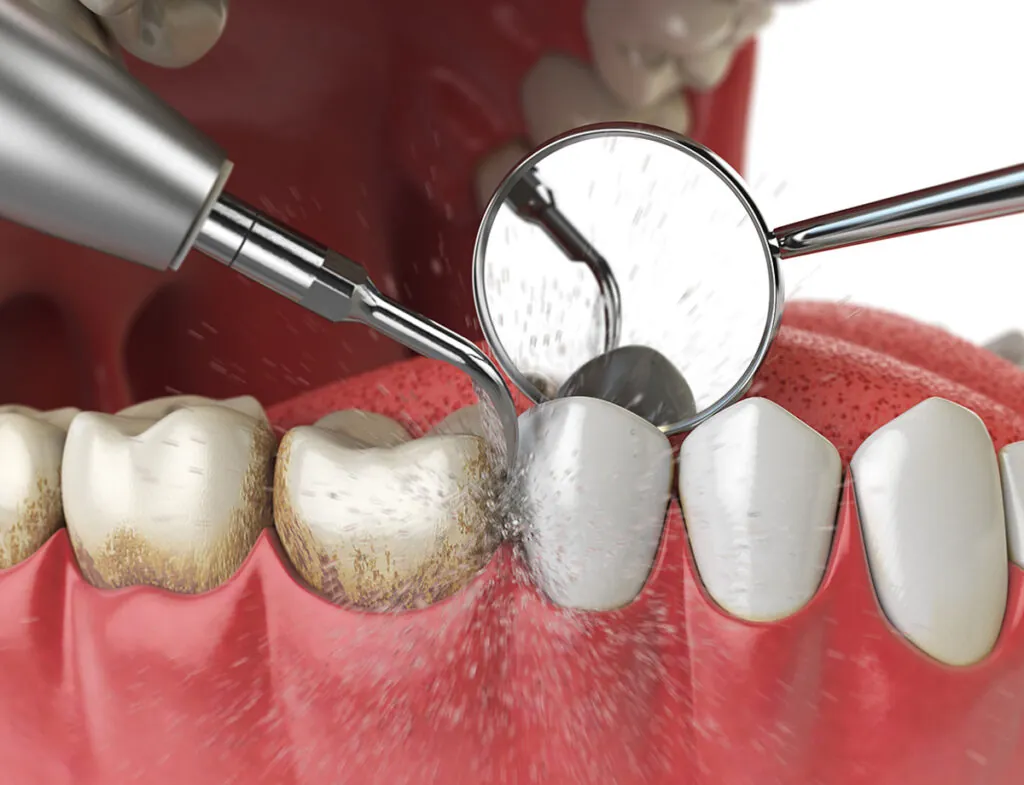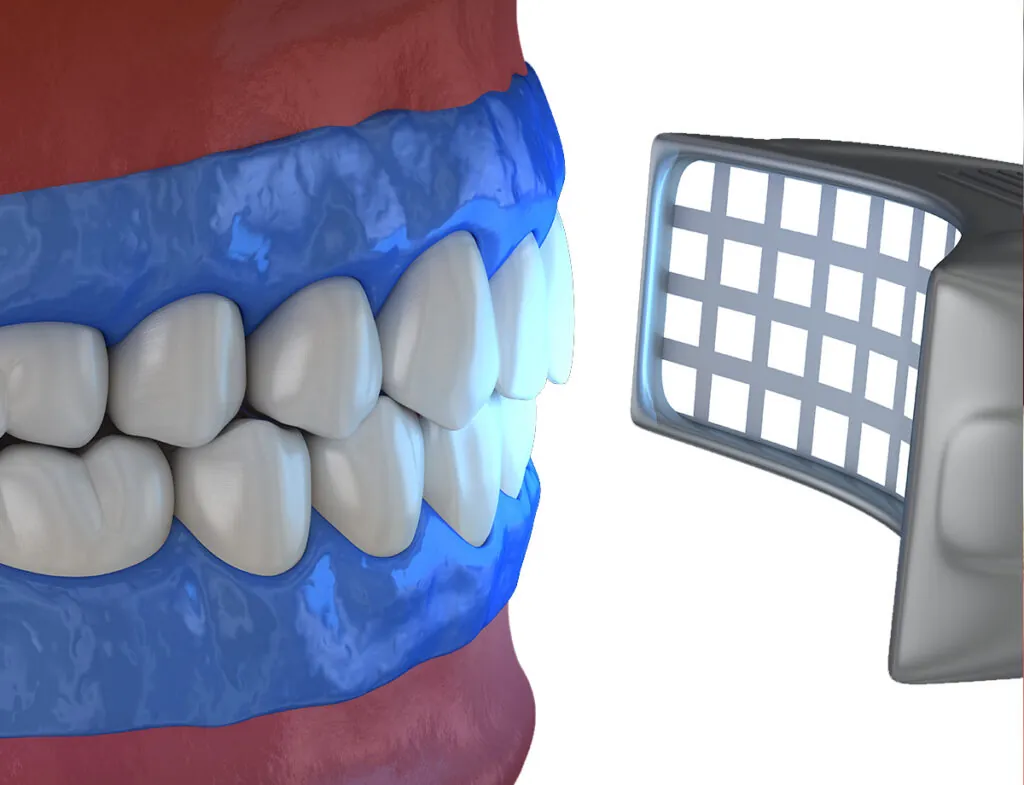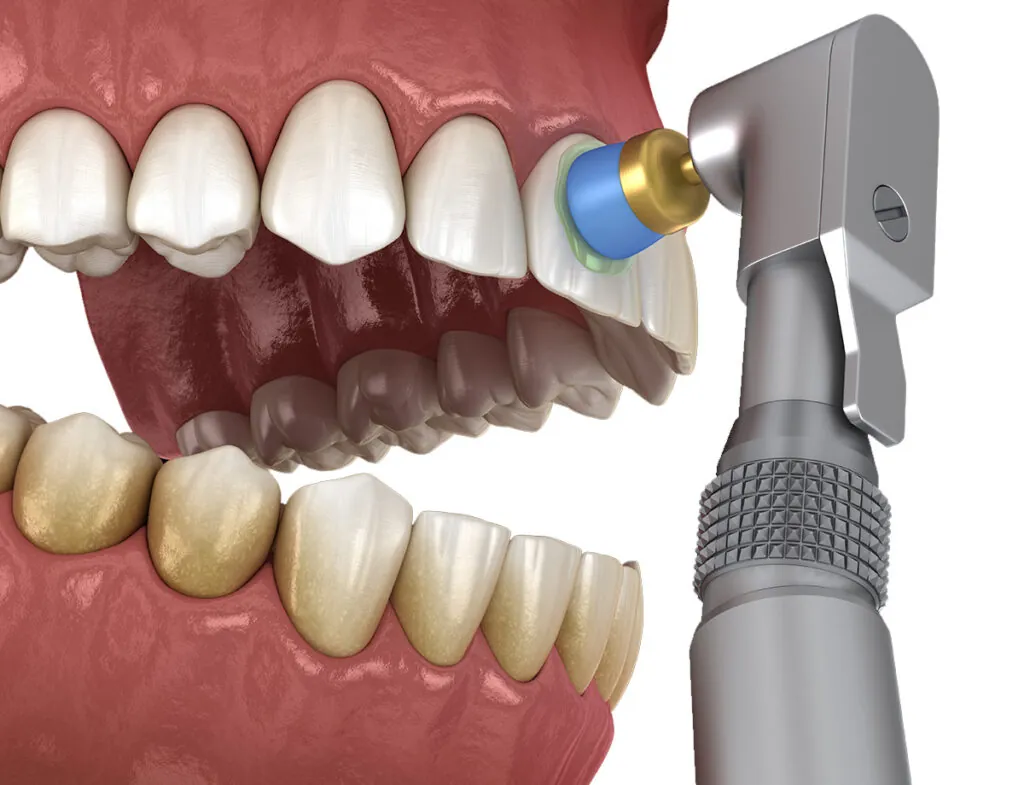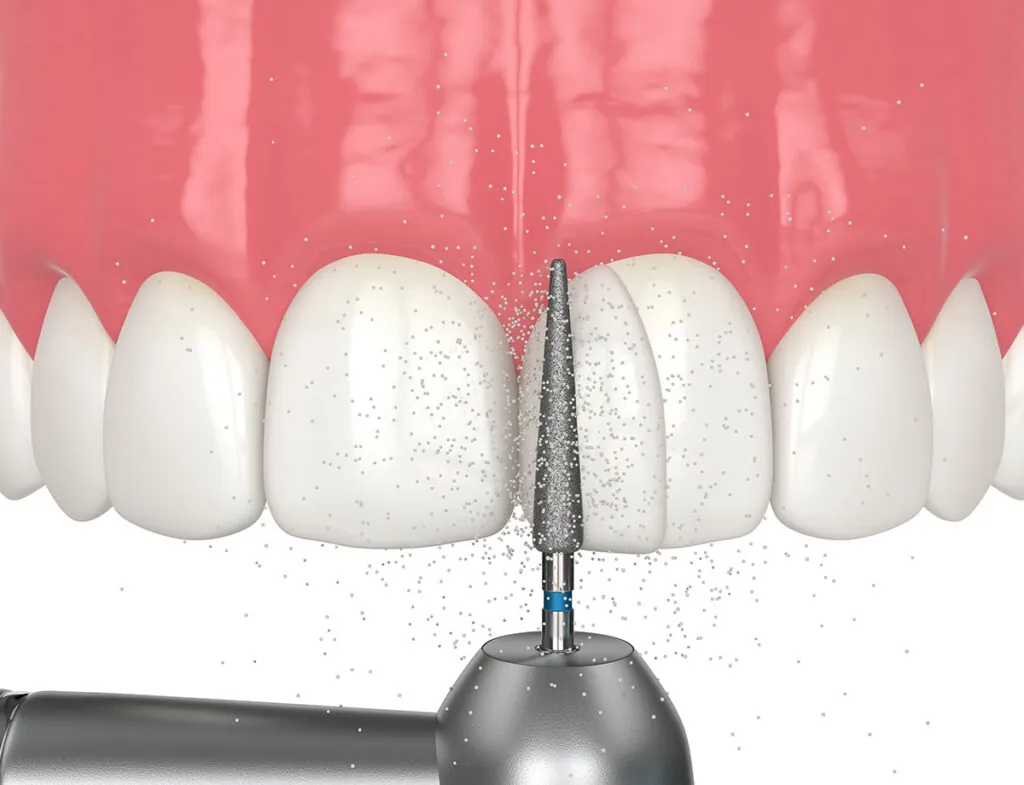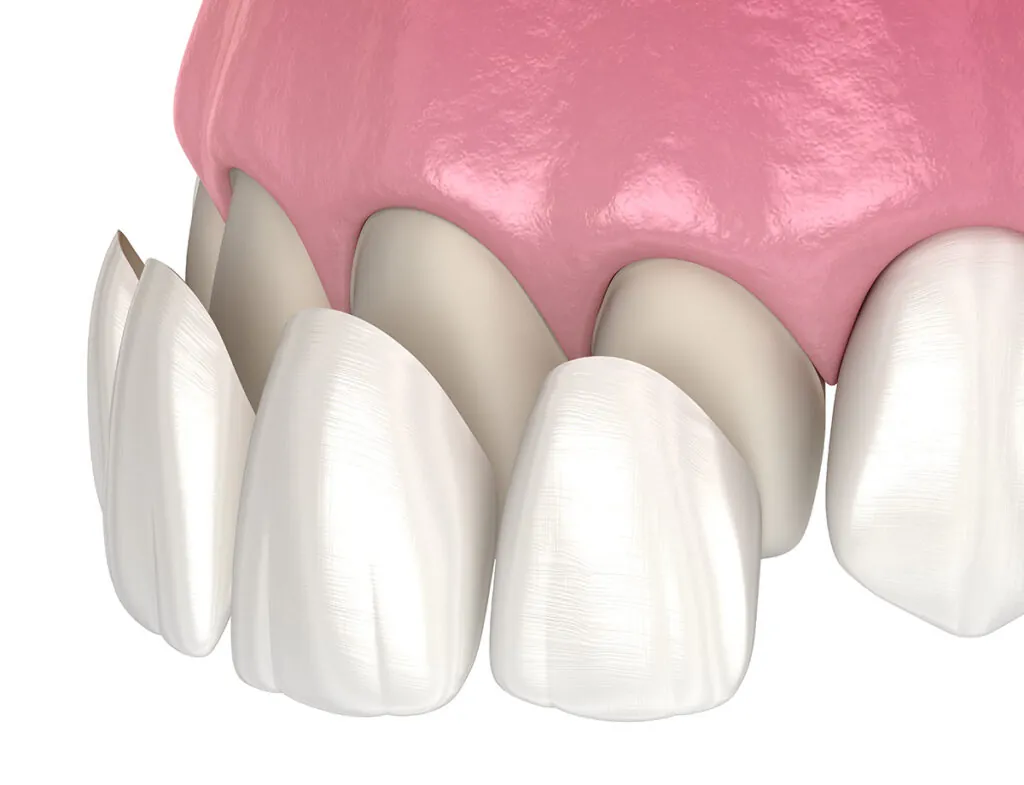La Habra/Chino Hills, CA – Braces are considered a worthy investment for straightening misaligned teeth and helping orthodontic patients achieve a healthy, functional smile and, ultimately, better confidence. If you are considering getting braces or are already in braces treatment, you might have heard that braces can stain your teeth. “This is a common question many patients have about getting braces,” says Dr. Robert Gire with Gire Orthodontics. “Stains and discoloration can occur during orthodontic treatment only if proper oral hygiene isn’t maintained. With the proper care, you will minimize the risk of getting stains from braces treatments.”
In this article, Dr. Gire will go over the common causes of braces stains, how to avoid them, and how you can treat them if they happen.
What are Braces Stains?
Stains from braces are spots of discoloration on the teeth, which may become apparent only at the end of the treatment and when the braces are removed. These stains can range from minor yellow marks to more serious white spots. The main reason for most of the braces stains is due to the formation of plaque around and underneath the brackets and wires of braces. In cases where particles of food and bacteria accumulate on the teeth, their waste products form acids which can wear away tooth enamel through a demineralization process which can lead to staining.
White spots are one of the most common types of braces stains. These generally tend to happen when underlying tooth enamel has been stripped of its minerals. White spots tend to form around the brackets and are an aesthetic concern, especially once the braces have been removed. Though discoloration/staining of the teeth may be a concern, it is generally preventable and sometimes treatable.
What Are the Causes of Teeth Discoloration/Staining with Braces?
Poor oral hygiene is the main cause of brace stains. Once the braces are attached to your teeth, they create additional sites where food particles, plaque, and bacteria can hide. If not cleaned correctly, this can cause staining.
While braces themselves don’t stain teeth, they can make brushing and flossing more difficult, which can easily lead to discoloration and staining. Here is a more specific look at what actually causes braces stains with the absence of proper oral hygiene:
Tartar Buildup: The sticky film of bacteria, also known as plaque, is produced by the interaction of sugars, starches of foods with bacteria in the mouth. Plaque, if not removed, hardens into tartar and contributes to discoloration.
Decalcification: It is the process by which teeth lose minerals and calcium. This occurs if plaque has been allowed to remain on the teeth for a long period of time, releasing acids that decalcify or demineralize the enamel leading to white spots on the teeth.
Dietary Habits: Certain foods and beverages like coffee, tea, wine, and highly colored food also act as contributors to staining if continuously consumed, not to mention poor oral hygiene practices.
Are White Spots Caused by Braces Permanent?
In most cases, braces stains are not permanent, meaning they can be removed by professional dental treatments such as professional cleaning, whitening, remineralization, or cosmetic treatments.
White spots may represent an early stage of tooth decay caused by decalcification. The good news is that at this early stage, these white spots can be reversed or improved with proper treatment. So, there’s hope for restoring your teeth to their natural beauty.
The earlier the detection and treatment of these white spots, the lesser the chances of permanent damage. Remineralizing toothpaste can help restore the minerals lost from the enamel, while Fluoride treatments and improved oral hygiene can help reduce the appearance of white spots.
How to Avoid Braces Stains?
The best way to avoid stains from braces is to practice good oral hygiene. Which means that you have to pay more attention to cleaning your teeth, especially at hard to reach places, compared to when you didn’t have braces.
Here’s how you can keep your teeth free from stains during orthodontic treatment:
Proper Brushing Techniques
Brush your teeth after every meal using a soft-bristled toothbrush and fluoride toothpaste. Be very careful to clean well around brackets and wires. Additionally, electric toothbrushes can be very handy because they can remove more plaque compared with a manual toothbrush.
Daily Flossing
Flossing is very important for taking the food particles and plaque from between your teeth and around the braces. You can floss more easily with either a floss threader or orthodontic floss. Water flossers can also become a very great option to clean those hard-to-reach areas.
Using Mouthwash
Antibacterial mouthwashes might help kill the bacteria that lead to plaque build-up and thus can help prevent white spots from setting in. Fluoride mouthwashes are equally good for extra protection.
Avoid Foods/Drinks That Cause Stains
Some foods and drinks are more prone to make your teeth stain. Examples include coffee, tea, soda, wine, and even berries and sauces. Limiting these type of foods and drinks can help reduce staining while in braces treatment.
Following the above tips can help you prevent stains caused by poor oral hygiene during the orthodontic treatment.
Can Braces Stain Be Removed?
Yes, most of the stains from the braces can be removed, but again their removal would depend upon the extent of the stain. Here’s a more detailed explanation on how you can remove some stains based on their type:
The sooner you address braces stains, the better your chances of restoring your teeth to their natural shade.
How To Remove Stains From Braces
The day your braces come off is a big day, and it might lessen the joy if you notice stains on your teeth after removing them. The first thing to remember is, don’t panic, as most stains can be easily treated. Here are several ways that can help remove stains or reduce their appearance:
Professional Cleaning
Professional dental cleaning can remove surface stains and tartar buildup attempting to improve the appearance of stained areas left on the teeth after braces.
Teeth Whitening
One of the other popular options for treating post-braces stains is teeth whitening. Yellowing or discoloration from brackets can be removed with at-home and in-office whitening treatments. Consult with your dentist to see if teeth whitening is likely to help remove the stains and if the procedure is safe for your teeth and gum health.
Remineralization Treatments
Treatments for remineralization can refill the lost minerals in your enamel if you have developed white spots caused by decalcification. The remineralization process, if done in the early stages of white spots, can reverse the signs of decay and reduce the white spots on the patient’s teeth.
Composite Restoration
Your dentist may recommend a composite restoration in more advanced stages of white spots. The process involves a tooth-colored resin coating that’s painted onto the affected areas and offers an improved aesthetic effect, allowing any white spots to potentially blend in.
Veneers
This is the last resort. For more severe stains and in very rare cases, veneers might be considered as a way to aesthetically resolve the white spots. Veneers consist of small pieces of porcelain or composite resin that are used to cover the frontal portion of a tooth to provide a new, unblemished surface.
While braces themselves do not cause permanent stains, lack of good oral hygiene during your orthodontic treatment can lead to developing stains in the areas where the brackets are attached to your teeth.
While the possibility of stains may seem daunting, remember that with proper care and attention, you can maintain a healthy, bright smile throughout your orthodontic treatment without developing any stains. By following good oral hygiene habits, watching your diet, and working closely with your orthodontic team, you will minimize your risk of stains and enjoy the benefits of a new, straight smile.
Remember, the journey to a beautiful smile is a collaboration between you and your orthodontic team. Please feel free to contact us at Gire Orthodontics to ask us any questions and seek advice about the process of getting braces and the possibility of developing stains.
